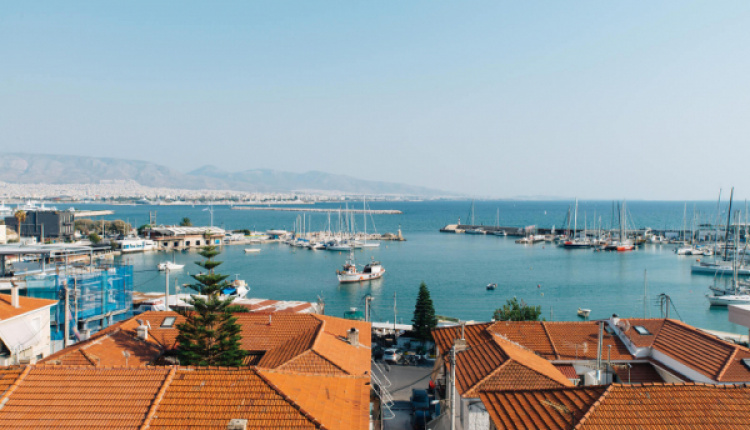Piraeus is much more than just a port. It’s a city in its own right. Yet most visitors fleetingly pass through on their way to the Greek islands and see little beyond the smoggy hustle of the ferry terminal. Take time to explore and you’ll find archaeological sights, stunning sea views, as far as the Saronic Gulf islands; and some of the best fish restaurants in Athens.
Piraeus was first incorporated into Athens in 515 BC. In 493 BC, the great naval strategist Themistocles began fortification works to enclose both cities behind Long Walls. These defences, still visible today, gave the Athenians uninterrupted access to the sea. Over three millennia, Piraeus has grown to become one of the largest passenger and cargo ports in the world. There’s more to this commercial hub and gateway to the Greek islands than meets the eye. Whether you have a few hours to kill before your onward journey or a full day (or more) to explore the area, this guide will help you get the most out of Piraeus.
Around the Port Inside the Piraeus metro station, the Electric Railways Museum of Piraeus is free. Highlights include a wooden metro carriage from the turn of the 20th century and a collection of rarely-seen black-and-white photography of Piraeus and Athens from the same period.
Perched on a ridge, the well-preserved fortifications of the Ietonian Gate were developed between the 5th and 3rd century BC. This easily accessible site overlooks the harbour and nearby Liberty Ship Hellas, a floating museum that provides a history of the Greek merchant navy.
The ungentrified, post-industrial area north of the port, Retsina is emerging as a new cultural quarter. Rodeo Gallery, which relocated from Istanbul to a cavernous former warehouse, shows a thought-provoking, avant-garde roster of artists from Greece and abroad. Beirut-born Carwan Gallery is the latest organic addition to Piraeus' gallery district, and promotes and produces collectible design, developing exceptional cross-cultural collaborations that call to attention a specific market—the Near East. Next door, Paleo Wine Store another repurposed warehouse with a striking wooden roof, offers an impressive selection of Mediterranean wines, paired with Greek cheeses and unpretentious tapas. In a former sheet metal factory, Pireé has a decadent ambience and a great cafe and cocktail bar, which bubbles with art events, performances, and pop-up exhibitions. This dynamic area comes to alive Thursday-Sunday when Rodeo is open and the surrounding bars and restaurants brim with a cultured crowd.
Kastella This breezy neighbourhood perched on top of a hill feels a little like an Athenian version of Lisbon, Valparaiso or San Francisco, with winding stairways and colourful turn-of-the-century buildings. Climb up to the summit to take in the great views from the park surrounding Profitis Ilias Church, with the Saronic Gulf and Athenian Riviera stretching out below. Afterwards, refuel at the quaint cafés and tavernas around Idis Street, like O Kalognomas ouzeri.
Mikrolimano Greek for ‘little port’, Mikrolimano is nestled beneath Kastella. Its biggest draw is the Michelin-starred Varoulko Seaside, presided over by celebrity chef Lefteris Lazarou. If that’s out of your budget, the cute houses that lead up the hill and the bright fish tavernas that ring the port are an aesthetic delight. Mikrolimano may be dwarfed by its neighbours Marina Zea and Piraeus port, but it has more of an upmarket island vibe.
To read this article in full, please visit:
thisisathens.orgPhoto Credit: Thomas Gravanis




